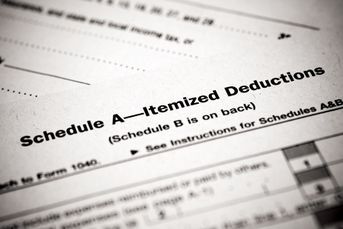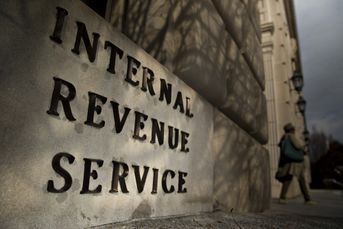Bunching expenses is one way to recover benefits lost under tax reform
Taxpayers can either accelerate or defer deductible expenses so that more of them happen in one tax year
With all the changes to the rules regarding tax deductions included in the most recent tax reform act, taxpayers and their advisers are looking for ways to recapture some of the tax benefits that were lost. It could be that the best strategy to implement now is one that’s actually been around a long time.
The Impact of the New Rules
As part of the attempt to broaden the overall tax base, Congress made two sets of significant changes to the tax deduction rules. On one hand, it limited or outright repealed many of the prior deductions. The deduction for state income and property taxes is now limited to $10,000. Interest on new mortgages, as well as existing home-equity loans, will be harder to deduct. Miscellaneous deductions were completely repealed, and casualty loss deductions were greatly curtailed.
In addition to limiting many itemized deductions, Congress also expanded the standard deduction, nearly doubling it from $12,700 to $24,000 for couples. When you combine the impact of the larger standard deduction with fewer itemized deductions, it’s likely that a larger percentage of taxpayers will simply take the standard deduction going forward. Preliminary IRS data for 2016 show that roughly 70% of taxpayers claimed the standard deduction, but some forecasts have that exceeding 90% for 2018.
With fewer taxpayers itemizing, it means those deductible expenses — in particular, charitable contributions — will no longer provide any federal tax benefit. Rather than giving up on charitable giving, what can taxpayers do to maintain some tax benefit for those gifts?
The Bunching Effect
Taxpayers may want to consider a “bunching” strategy, where they either accelerate or defer deductible expenses so that more of them happen in one tax year, rather than spreading them over multiple years. This bunching technique has been used in the past to help taxpayers exceed the adjusted gross income thresholds for deducting medical or miscellaneous expenses, but it wasn’t easy to actually do as it’s not always possible to control the timing of those expenses. But with charitable giving, taxpayers have the control to make this strategy actually work.
Take a couple that claims the maximum deduction for state taxes in 2018 of $10,000. They also have a $200,000 mortgage at 4%, meaning they pay $8,000 in interest, plus they give $5,000 to charity each year. Combining those three expenses leaves them with $23,000 of total deductions. However, rather than itemizing their deductions in 2018, they would instead claim the standard deduction of $24,000, so they receive no tax value for those other expenses. Over a four-year period, this means $20,000 of charitable giving with no tax benefit. While they can’t stop paying their state taxes or mortgage interest, they might be inclined to reduce or even stop the charitable giving.
But what if instead of giving $5,000 to charity in 2018, the couple deferred that for a year and gave $10,000 in 2019, and then repeated that approach for 2020 and 2021. Their itemized deductions would fall to $18,000 in 2018 and 2020, but they would continue to claim the $24,000 standard deduction. However, in 2019 and 2021, their itemized deductions would be $28,000, or $4,000 over the standard deduction. In this case, their total deductions over the four-year period would be $104,000, or $8,000 more than had they continued their old strategy of donating every year.
This bunching can also be done in reverse — double donations in 2018 and then give nothing in 2019. This is harder to do though, as it requires more free cash flow in the years taxpayers make gifts. However, combining this strategy with a donor-advised fund can allow for a more consistent stream of giving to charity.
It may not be for everyone, but with careful planning and guidance from an adviser, some of the benefits lost under the tax reform can be found again.
(More: Tax reform: 7 essential strategies for financial advisers)
Tim Steffen is director of advanced planning for Baird. Follow him on Twitter @TimSteffenCPA.
Learn more about reprints and licensing for this article.








